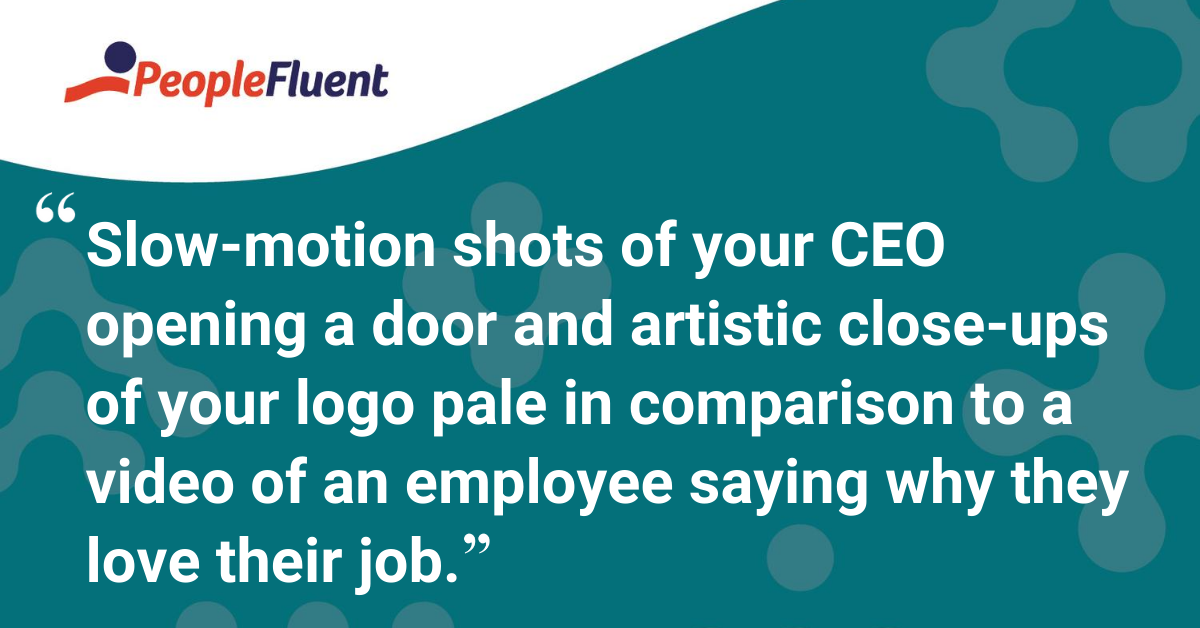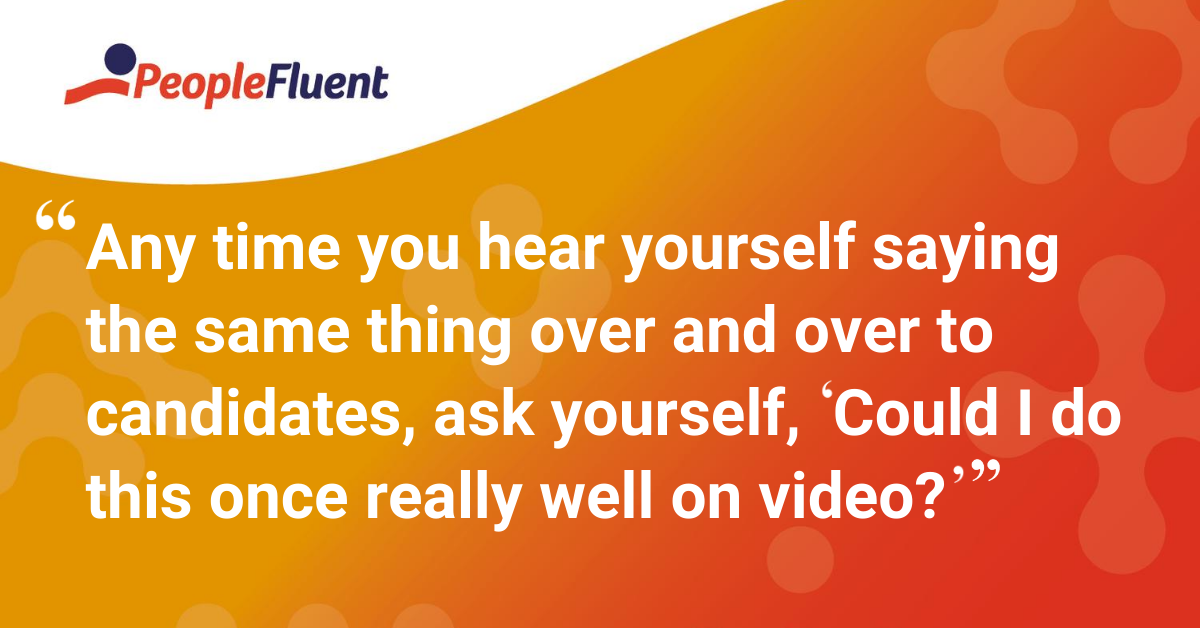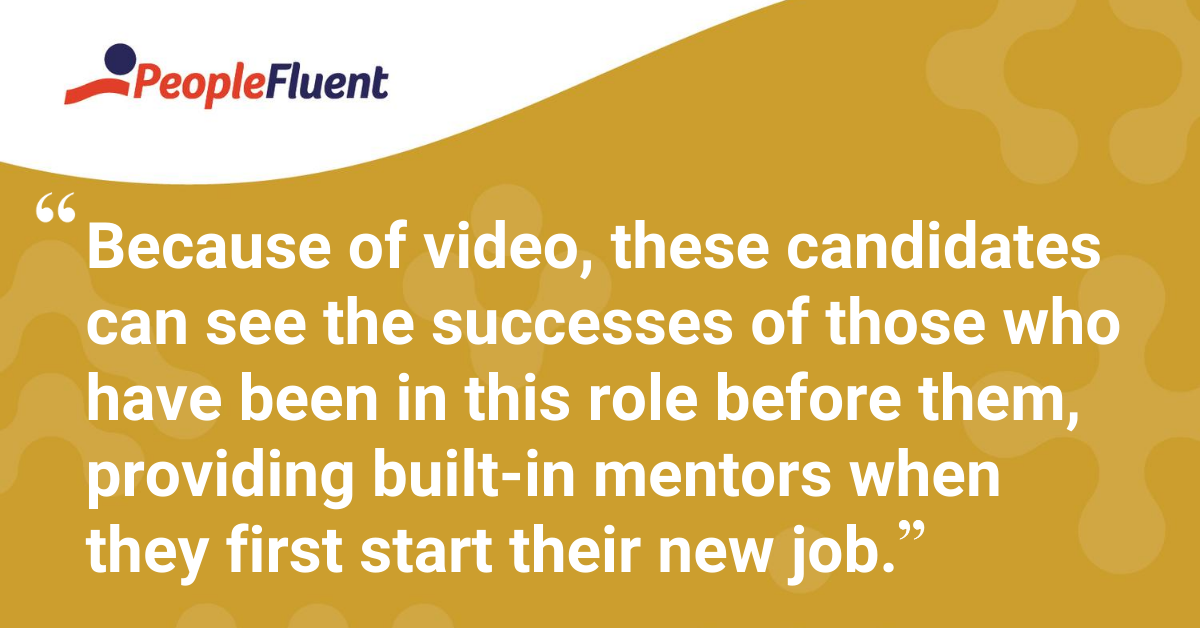Published: Mar 16, 2020Time to read: 5mins Category: Compensation
3 Tips for Using Video Interviewing Tools
Mobile users are more likely to watch a two-minute video than to read for that same amount of time. Furthermore, what you tell them will be more memorable. Research shows that when paired with traditional learning materials, relevant visuals are proven to increase an employee’s knowledge retention levels by 65%. Although it’s been almost 40 years since video killed the radio star, it’s still one of the most powerful tools you have.
Whether you’re old school at heart and still enjoy reading a physical book (like me), or you prefer an audiobook with beautiful graphics interspersed—we can all meet in the middle and agree that our brains are hardwired for visual content. According to Forrester Research, human brains absorb 50% more information through moving pictures and sound than they do from text. What’s more, the same study showed an employee’s knowledge retention levels increase by 65% when they are given relevant visuals with traditional learning materials.
The reality is that video is a powerful tool for anyone, especially L&D professionals. You can convey more information and emotion than in text. So, how can you leverage visual content to tell the stories that matter and create value with video? From our point of view, it’s a delicate balance.

Be Authentic, not Slick
Think about when you’ve wanted to know something—whether it is how a product works or which rides are best for three-year-olds at Disney’s Magic Kingdom. I’ll bet the quality of the video didn’t matter nearly as much as the quality of the content. In fact, seeing real people in their actual surroundings is more authentic than a costly video made in a production room with a green screen.
Slow-motion shots of your CEO opening a door and artistic close-ups of your logo pale in comparison to a video of an employee saying why they love their job. Consider the power of telling real stories on your career site, and now consider that you can do it with only a GoPro, a Snowball microphone and your own employees. No agency required. And low fidelity isn’t only fast and inexpensive—it leans into the authenticity element, which is hip these days.
From the blog: 'Learn from the Best: How Goldman Sachs Uses Video Interviewing to Improve Talent Experience'
Be Kind. Rewind.
Now that you know video doesn’t have to be a big-budget production, why not use more of it? Any time you hear yourself saying the same thing over and over to candidates, ask yourself, “Could I do this once really well on video?”
Though we understand it can be challenging to convince your colleagues to be the on-screen talent, it adds the necessary human element. In addition to a written job description, posting a 60-second video with your hiring manager explaining what the job entails can aid in your pursuit of becoming an employer of choice. It gives candidates two things that your job description never would:
- they get to see who they’ll be working for.
- they hear the position requirements directly from the decision-maker.
In addition to giving candidates a sneak peek, you’ll ensure that there is no misinterpretation and all candidates are getting the same information. Plus, you’ll reclaim time during an interview which can then be used to know your candidates better instead of giving them the same spiel.

Why not be kind to your recruiting team and hiring managers and keep them from having to repeat the same pitches over and over? Individualizing the process makes it easier to find an authentic match and lessens the tedious nature of high-volume recruiting.
Hand-picked for you: 'How Learning Experience Platforms Support 6 of 2020’s Top Learning Trends'
Tell It to Me Straight.
We have a client who was struggling with an abysmal 30-day turnover for a specific job in their plant. The role required that an employee arrive earlier than the rest of the production staff. It was often messy, and the required safety gear had a tendency to make employees overheat. However, the day ended at 2:00 pm and many of the managers had been promoted from that role.
To combat the turn-over, the company had to get real. Instead of an average job description, they created a video that showed what the work was like. They also had employees who previously held that role describe their experience and discuss how it helped further their careers within the company.
Now, our client is getting candidates who have a better understanding of the role’s requirements. Candidates are also more aware of how the job could positively impact their career development, and they appreciate the unique benefits of getting off work early to pick their kids up from school or take classes at the community college. Because of video, these candidates can see the successes of those who have been in this role before them, providing built-in mentors when they first start their new job.

When you think about video and how you can use it, don’t be deterred by thinking it should be a Coppola-directed masterpiece. Instead, think about how you can tell authentic, unique stories about your organization. Shopify has my favorite one ever.
If you have tips based on how you’re successfully using video on your career site, we’d love to hear from you! You can reach us on Twitter or LinkedIn to share your stories. If you’re new to video production and want more information about how you can use video to accelerate processes in your organization, get in touch with our experts.
Editor’s Note: This post was originally published in June 2017 and has been refreshed with more recent data.
Discover How Recruitment Lets You Find the Right People—Fast
PeopleFluent helps you fill critical roles with the right people and the right skillsets on a global scale. At the same time, it helps you build your employer brand and sharpen your competitive edge.